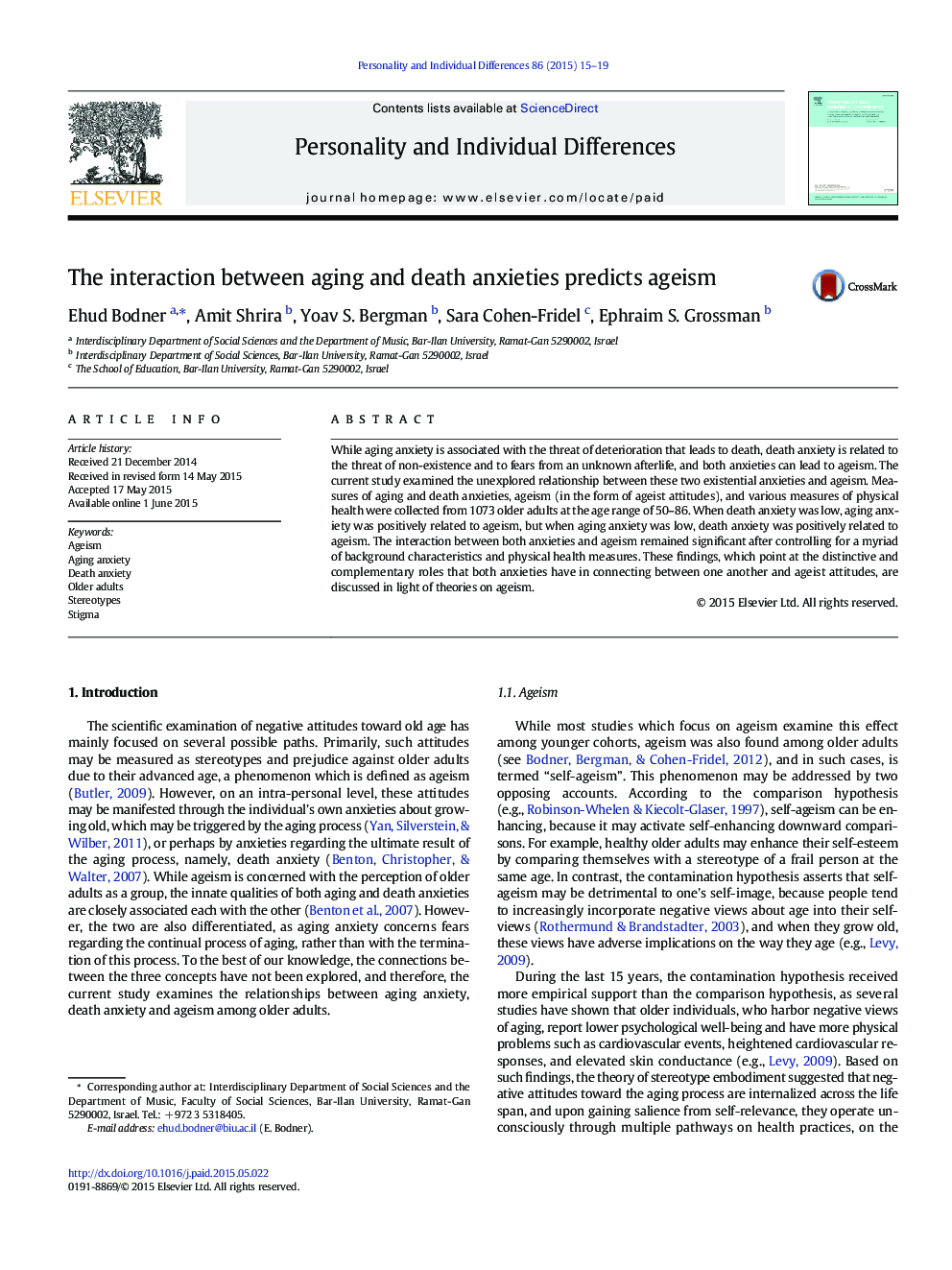| Article ID | Journal | Published Year | Pages | File Type |
|---|---|---|---|---|
| 889949 | Personality and Individual Differences | 2015 | 5 Pages |
•Aging and death anxieties positively contribute to ageist attitudes.•Aging and death anxieties moderate each other's effect on ageist attitudes.•The effect of each anxiety on ageism is stronger for individuals low on the other anxiety.
While aging anxiety is associated with the threat of deterioration that leads to death, death anxiety is related to the threat of non-existence and to fears from an unknown afterlife, and both anxieties can lead to ageism. The current study examined the unexplored relationship between these two existential anxieties and ageism. Measures of aging and death anxieties, ageism (in the form of ageist attitudes), and various measures of physical health were collected from 1073 older adults at the age range of 50–86. When death anxiety was low, aging anxiety was positively related to ageism, but when aging anxiety was low, death anxiety was positively related to ageism. The interaction between both anxieties and ageism remained significant after controlling for a myriad of background characteristics and physical health measures. These findings, which point at the distinctive and complementary roles that both anxieties have in connecting between one another and ageist attitudes, are discussed in light of theories on ageism.
